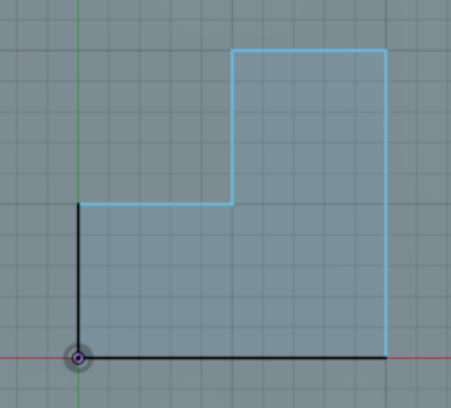Is there an algorithm where I provide a list of non-overlapping squares, for example:
sq1 = [(0, 0), (0, 1), (1, 1), (1, 0), (0, 0)]
sq2 = [(1, 0), (1, 1), (2, 1), (2, 0), (1, 0)]
sq3 = [(1, 1), (1, 2), (2, 2), (2, 1), (1, 1)]
and it will return some sort of "collinear convex hull" where the results will be?:
res = [(0,0), (0,1), (1,1), (1,2), (2,2), (2,0), (0,0)]
If I try the regular convex hull algorighm, it returns
Update: Every square will share at least one side with another, but if for examples there is an empty square in the middle of a 9x9 grid:
sq1 = [(0, 0), (0, 1), (1, 1), (1, 0), (0, 0)]
sq2 = [(0, 1), (0, 2), (1, 2), (1, 1), (0, 1)]
sq3 = [(0, 2), (0, 3), (1, 3), (1, 2), (0, 2)]
sq4 = [(1, 2), (1, 3), (2, 3), (2, 2), (1, 2)]
sq5 = [(2, 2), (2, 3), (3, 3), (3, 2), (2, 2)]
sq6 = [(2, 1), (2, 2), (3, 2), (3, 1), (2, 1)]
sq7 = [(2, 0), (2, 1), (3, 1), (3, 0), (2, 0)]
sq8 = [(1, 0), (1, 1), (2, 1), (2, 0), (1, 0)]
ret = [(0, 0), (0, 3), (3, 3), (3, 0), (0, 0)]
So ignoring the "hole" in the middle. This would be the same results generated by the "regular" Convex Hull algorithm.
However, if instead I have:
sq1 = [(0, 0), (0, 1), (1, 1), (1, 0), (0, 0)]
sq2 = [(0, 1), (0, 2), (1, 2), (1, 1), (0, 1)]
sq3 = [(0, 2), (0, 3), (1, 3), (1, 2), (0, 2)]
sq4 = [(1, 2), (1, 3), (2, 3), (2, 2), (1, 2)]
sq5 = [(2, 2), (2, 3), (3, 3), (3, 2), (2, 2)]
sq6 = [(2, 1), (2, 2), (3, 2), (3, 1), (2, 1)]
sq7 = [(2, 0), (2, 1), (3, 1), (3, 0), (2, 0)]
Then the result should be:
ret = [(0, 0), (0, 3), (3, 3), (3, 0), (2, 0), (2, 2), (1, 2), (1, 0), (0, 0)]






